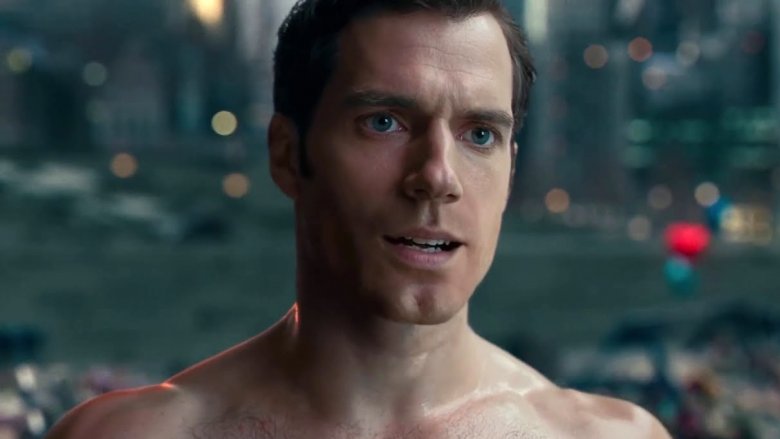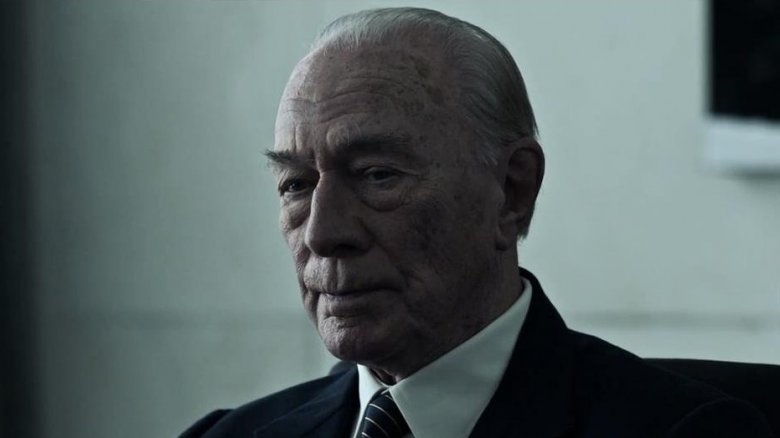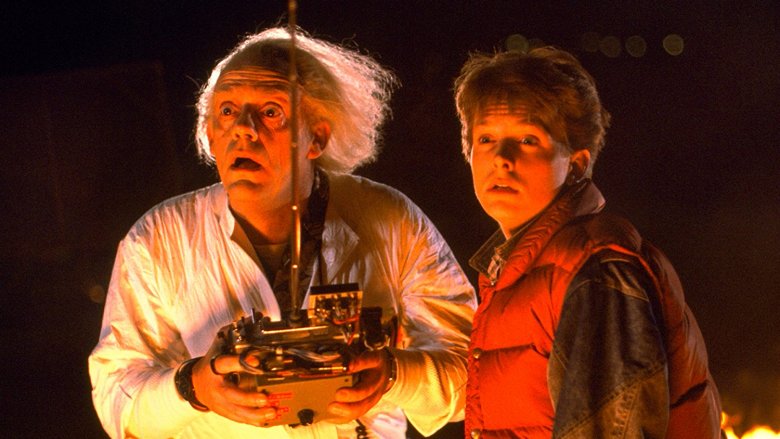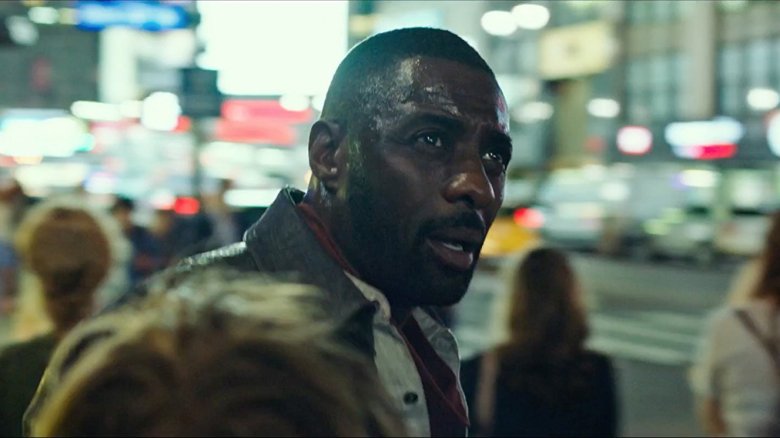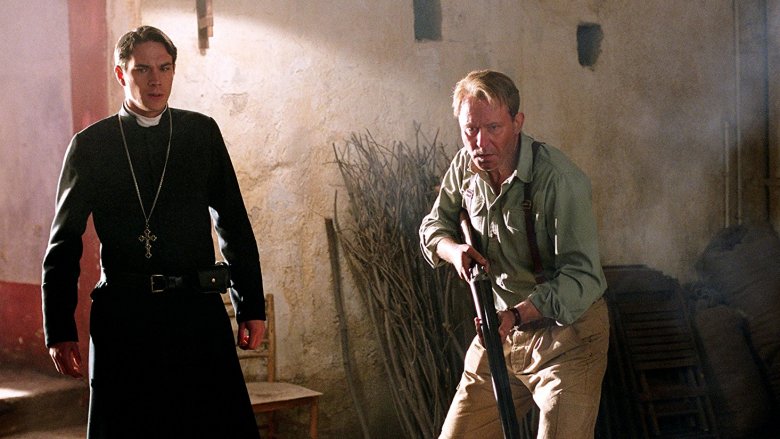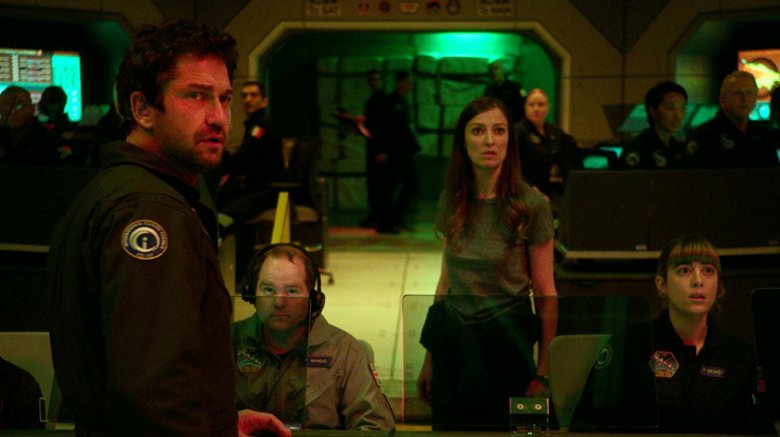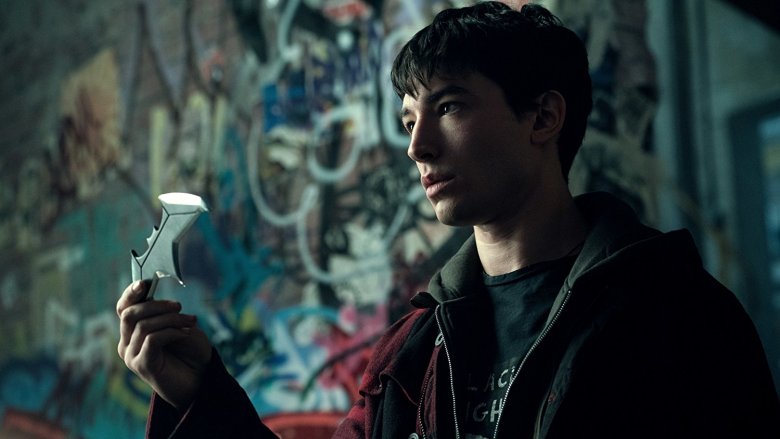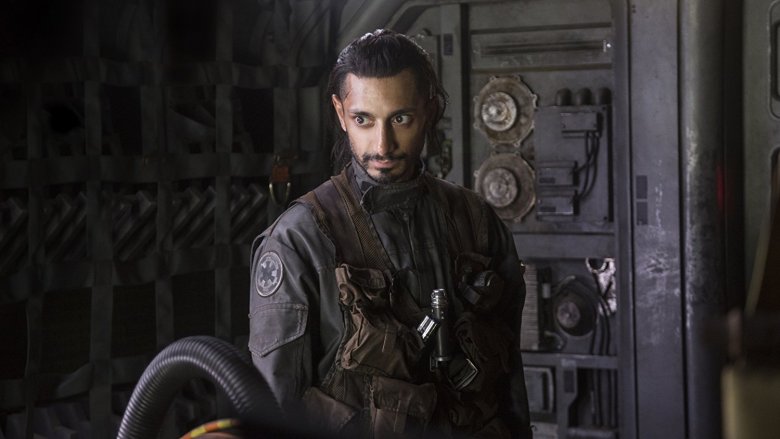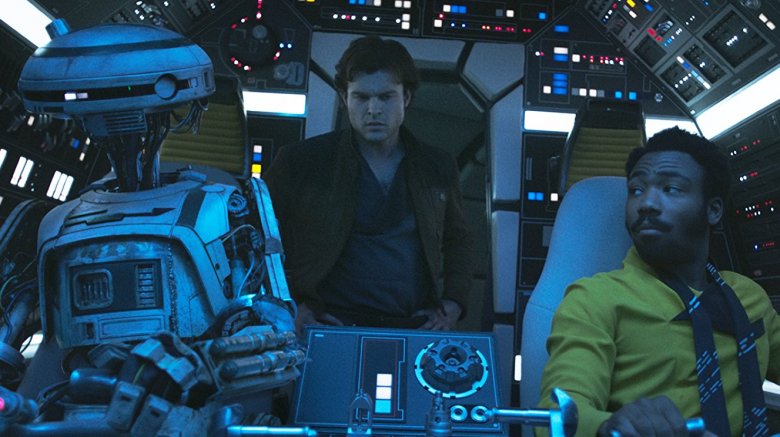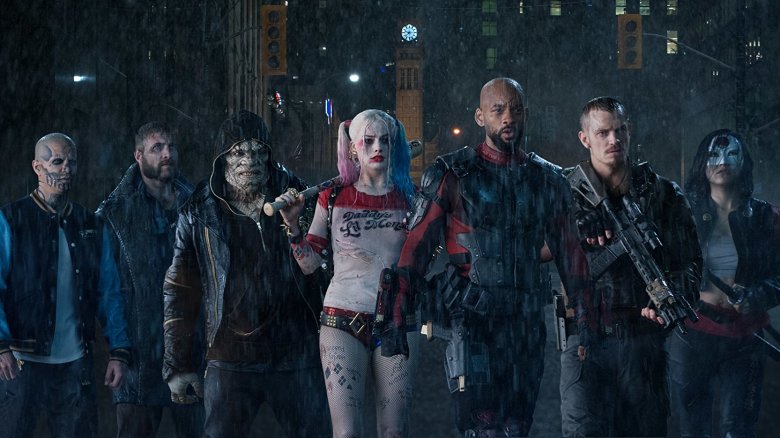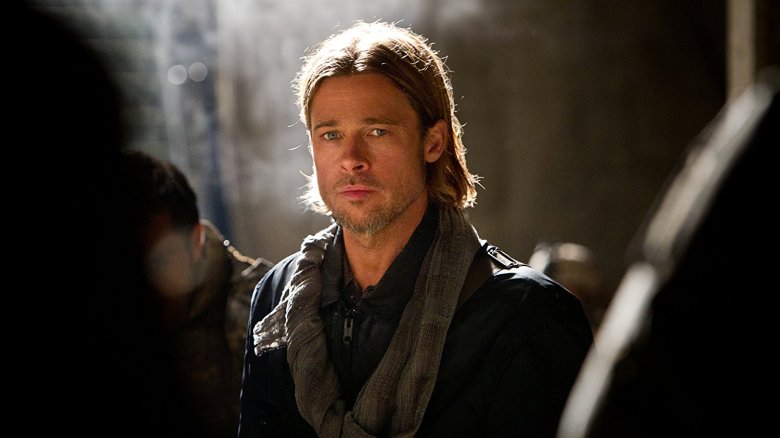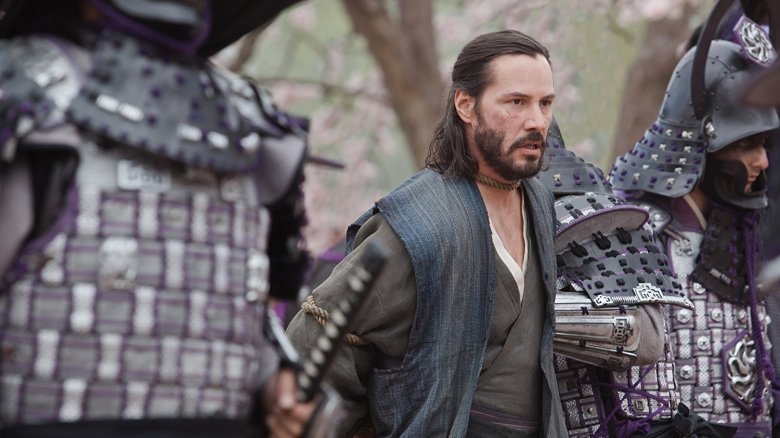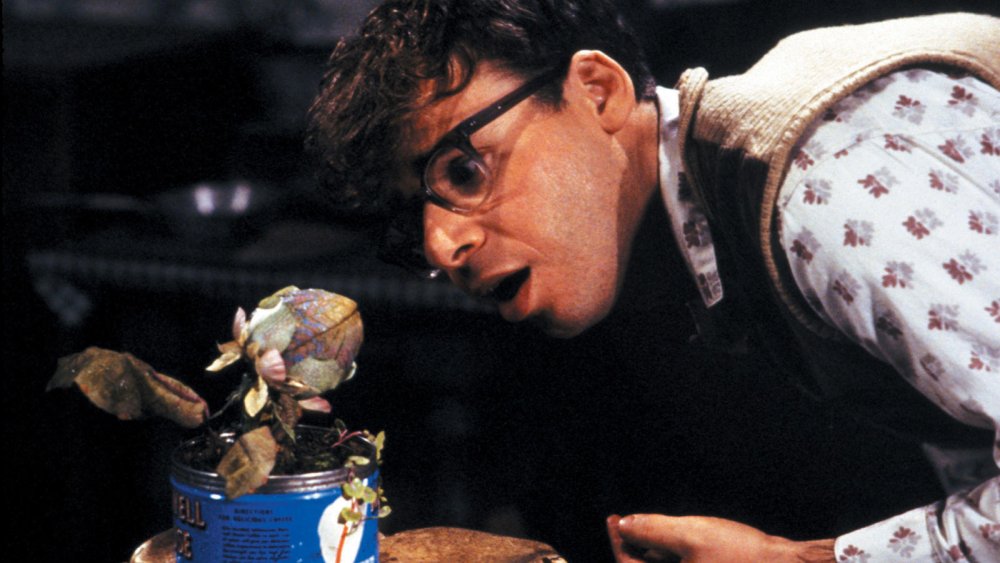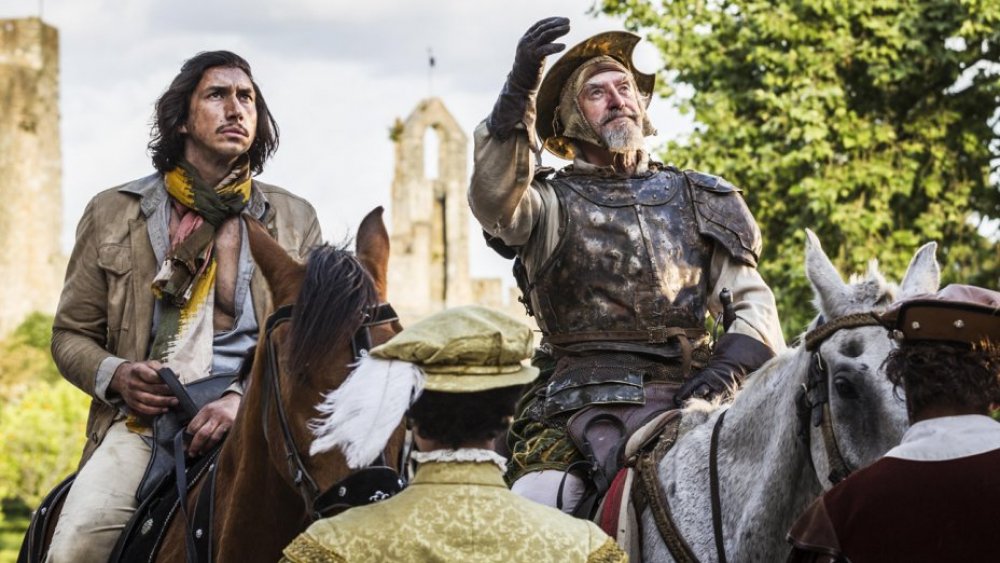Reshoots That Cost The Filmmakers A Ton Of Money
Making a movie is never easy. Weeks, months, and even years are spent in pre-production, with cast members, writers, and directors often signing on and leaving the film before it even starts filming. Once production officially begins, things can get even more complicated, with studio demands sometimes conflicting with the director's vision and internal drama or external forces leading to craziness on set.
Once it's all done, the film is hopefully ready to go into post-production and make its way to theaters. Sometimes, though, the editing process reveals problems that weren't visible before, or highlights issues that were plaguing the production all along. When this happens, studios have to make a choice — work with what they have, or shell out even more money for reshoots.
Reshoots can save a movie, fixing its issues and allowing it to become a box office and/or critical success. It doesn't always work, though — sometimes, that extra investment is for naught, and the film still flops despite the added expense. Here are some movie reshoots that cost filmmakers a ton of money... with varying degrees of success.
All The Money In the World
The Kevin Spacey sexual harassment scandal rocked Hollywood, helping to spur the #MeToo movement and resulting in widespread changes across the entertainment industry. The accusations had a particularly public effect on the Ridley Scott historical drama All the Money in the World, which was set to feature Spacey in a supporting role as J. Paul Getty.
When the scandal broke, it was only a month and a half before the film's planned release date. However, Scott still decided to cut Spacey out, replacing him with Christopher Plummer. Scott had to hurry to reshoot Spacey's scenes, which mostly featured the actor in solo shots or interacting with a few other characters.
The reshoots, which lasted eight to 10 days, reportedly cost upwards of $10 million. Part of this cost was due to star Mark Wahlberg's controversially large paycheck, which landed him in hot water after it was revealed he'd made significantly more than his co-star Michelle Williams. (Wahlberg later donated his earnings to the Time's Up initiative.)
Considering the fact that the move was widely celebrated and Plummer went on to earn an Oscar nomination for his part, it seems that cutting Spacey out of the film was the right decision — albeit still a costly one. All the Money in the World did eventually go on to do reasonably well at the box office, though, earning $55.6 million worldwide.
Back to the Future
The Back to the Future franchise is a classic, and Michael J. Fox's performance as Marty McFly is nothing short of iconic — but he wasn't the person originally cast in the role. Instead, Eric Stoltz, an up-and-comer who'd earn a Golden Globe nomination for Mask in 1985, took the role.
After a few weeks of filming, director Robert Zemeckis and writer Bob Gale realized that Stoltz just wasn't right for the part. Although he was doing well in the dramatic moments, he couldn't sell the movie's comedic elements, leading Zemeckis and Gale to approach studio head Sid Sheinberg and ask him to let them fire Stoltz and replace him with Fox, who'd previously been unavailable due to his commitments on Family Ties.
Stoltz ended up sticking around the set for a while after Zemeckis got the go-ahead to fire him, with the crew continuing to shoot and the actor in the dark. Ultimately, the move added $3 million to the first film's budget, although — nothing against Stoltz — it definitely seems like the right decision. Fox earned a Golden Globe nomination for the first film, and the franchise made a total of $957.5 million worldwide.
The Dark Tower
Stephen King has had varied success at the box office. The horror maestro's works have inspired huge hits like It, but he's also had a number of big flops, including 2017's The Dark Tower. The movie was the result of a decade-long journey to bring King's epic work to the big screen, but it was plagued by production issues, including somewhere around $6 million worth of reshoots.
A lot of the issues arose due to the project's sticky rights situation. Due to the book's long journey to the big screen, both Media Rights Capital (MRC) and Sony Pictures had interests in the project. As part of their agreement, MRC was given "kill rights" to axe anything they didn't like. According to some insiders, this led to there being "too many cooks in the kitchen," giving the project a disjointed feel.
Also potentially compounding the project's issues was director Nikolaj Arcel, who reportedly had trouble with the scale. After negatively reviewed blind screenings, the companies considered bringing on a more experienced director, but the cost was too high. Instead, they shelled out for the reshoots.
The additional photography helped to fill out the backstory of why Idris Elba's Roland Deschain had such a contentious relationship with Matthew McConaughey's Man in Black, along with adding a new scene to better explain the movie's plot with more imagery and less exposition. Unfortunately, though, it wasn't enough to save the movie, which was trashed by critics and didn't do well at the box office.
Exorcist: The Beginning
Sometimes, movies just don't work out, no matter how hard you try. This seems to have been the case for Exorcist: The Beginning, the 2004 horror film that lost one director, had another die during filming, and ultimately was subject to millions of dollars in reshoots — all to flop at the box office and be trashed by critics.
Initially, all seemed well with the film, a prequel to the 1973 horror hit The Exorcist. The movie had its script rewritten by bestselling author Caleb Carr, and it landed The Manchurian Candidate's John Frankenheimer to direct and Liam Neeson to star. However, when Frankenheimer died in the summer of 2002, the project was thrown into limbo.
The studio then brought on Taxi Driver writer Paul Schrader to direct. Schrader landed Stellan Skarsgård as his new star and completed principal photography in February of 2003. However, when Schrader brought his first cut to the studio, they were reportedly horrified — by the lack of horror.
Carr reportedly sent Schrader an email saying that the project would only be salvageable with "another $10 million in reshoots," which were scheduled with Die Hard 2 director Renny Harlin — who ended up taking the directing credit for the film. After all the stops and starts, Exorcist: The Beginning ended up being a critical and commercial failure, bringing in only $78 million worldwide against an $80 million budget.
Geostorm
Sometimes you get extremely lucky in Hollywood — and sometimes, you're Geostorm. The Gerard Butler disaster pic got saddled with the worst possible luck at the box office, hitting theaters just a few days after a series of hurricanes devastated the United States — a time when a movie about rampaging weather destroying the world wasn't exactly likely to be welcomed by audiences.
The problems for Geostorm started long before that, though. The film had a troubled road to the big screen, with the release date pushed back multiple times. Director Dean Devlin reportedly delivered an "unwatchable" first cut, leading to a long post-production process and extensive test screenings.
The reaction was still negative, though, so Disney brought on mega-producer Jerry Bruckheimer to oversee some $15 million in reshoots, led by director Danny Canon and screenwriter Laeta Kalogridis. The reshoots removed some characters, looking to better tie together the film's existing VFX sequences in a way that made sense.
The film was reportedly better received after the reshoots, although it still wasn't exactly a favorite with critics. Compounding the issue was the vast change in the film's marketing, with the first trailer reflecting the somber, pre-reshoots tone, and the second showing off the movie's new, fun vibe. The movie wound up having a less than stellar performance at the box office, pulling in just $33.7 million domestic against a $120 million budget. It did much better internationally, though, earning an additional $187.9 million.
Justice League
DC's attempt to launch an extended universe has met quite a few roadblocks, including negative critical reception and mixed fan response. One of their biggest problems to date, though, was also one of the most unexpected: Henry Cavill's mustache. According to reports, the facial hair Cavill grew for his role in Mission: Impossible 6 wreaked havoc on Justice League reshoots, helping to balloon their cost to $25 million.
The movie's reshoots stemmed from a family tragedy involving director Zack Snyder. Avengers director Joss Whedon took over the project and oversaw the reshoots, reportedly adding dialogue that would provide some "connective tissue" to link together the set pieces shot by Snyder. Much debate ensued over how the reshoots affected the tone, with some saying that they were aimed at making the movie lighter.
The reshoots lasted nearly two months and were compounded by the cast's difficult schedules, including Cavill's work on M:I6. Paramount reportedly wouldn't let Cavill shave his mustache when he had to return to suit up for Justice League, so the mustache had to be digitally removed in post-production — a move that drew a lot of ire from the internet when the film was released. The reshoots might have helped the movie in some respects, but it was still a disappointment at the box office, pulling in the lowest gross of the DCEU to date.
Rogue One: A Star Wars Story
Lucasfilm saw big success with its first Star Wars anthology film. Rogue One: A Star Wars Story wound up being a hit with critics, sitting at 85 percent on Rotten Tomatoes, and was a box office winner as well, pulling in just over $1 billion worldwide including $532.1 million domestic. But before all that, the movie went through millions of dollars in extra work overseen by Michael Clayton director Tony Gilroy.
Gilroy was brought in to work on rewrites and reshoots, stepping in after the first cut was filmed by director Gareth Edwards. Although the total cost of the reshoots is unknown, Gilroy alone is said to have made more than $5 million for his work, not accounting for the additional cost of the actors, crew, sets, and more.
As it turns out, the reshoots may have been necessary. Gilroy said that the movie was "in so much terrible, terrible trouble" before he came on board, but added that the fix was "instantly clear" to him — the ending had to kill everyone off in order to fully sell the theme of sacrifice and keep the "purity" of the film. Although the movie's redone ending was certainly shocking, it definitely had the intended effect.
Solo: A Star Wars Story
Lucasfilm made an unprecedented move in the summer of 2017 when they decided to drop Phil Lord and Christopher Miller, the directors of Solo: A Star Wars Story, just three weeks before production was scheduled to wrap. The pair were eventually replaced by Oscar winner Ron Howard, who took over getting it back on track.
Lord and Miller's firing reportedly came due to creative conflicts with Lucasfilm. They also reportedly believed they weren't given enough time to complete the film, with the two feeling they were under "extreme scheduling constraints" and "never given enough days for each scene from the very beginning." As it turns out, Lucasfilm had a lot more time they could have spared, as Howard oversaw months of reshoots.
Howard reportedly reshot about 70 percent of the film, and is said to have nearly doubled the budget. The reshoots reportedly worked off the same script, but there were clearly a lot of changes in the movie's tone. They also unfortunately cut out a planned role for Michael K. Williams, who was unable to make it back to the set and was replaced by Paul Bettany. Although we don't know the full story behind the reshoots, it seems clear that Lucasfilm was wiling to shell out whatever they had to in order to get the movie where they wanted it to be.
Suicide Squad
Another troubled DCEU project, David Ayer's Suicide Squad was trashed by critics but still managed to do well at the box office, bringing in $746.8 million worldwide. However, the movie had a troubled road to the big screen, including a reported $22 million in reshoots that were widely discussed in the press leading up to its release.
Most of the reports dealt with questions of whether the reshoots were ordered to add humor to the film, a perpetual thorn in the DCEU's side. Ayer later disputed this, saying he used the reshoots to add more action. "When a studio loves your movie and asks what else you want, go for it!" he wrote on Twitter. Star Jai Courtney confirmed this, saying there was plenty of humor in the original scenes.
Whatever the reshoots ultimately did, they reportedly came after a fraught production in which the studio was heavily breathing down Ayer's neck, creating their own cuts and testing them against his. Studio and director conflicts have become increasingly common in big-budget filmmaking, and Suicide Squad might be an example of how they can ultimately detract from a final product.
World War Z
Brad Pitt's World War Z had a long and winding road to the big screen, which included reshooting 40 minutes of the film and ultimately pushing the budget up to somewhere around $200 million. The production was fraught even before that, though, with the crew at one point finding a desk drawer full of purchase orders that had never been accounted for, amounting to millions of dollars no one expected to pay.
Things got even worse when the studio saw a director's cut, which clearly showed that the movie's ending didn't work. Marc Evans, president of production at Paramount, said he knew they had to reshoot the movie. Lost's Damon Lindelof was brought on to rewrite the movie's script, and he, along with Pitt, realized that the best way to get the movie back on track was to drop some major scenes and reshoot them.
Although Lindelof thought it would be tough to sell the idea to Paramount, the studio ended up going with it and ordered seven weeks of additional photography. Lindelof had a busy schedule and was ultimately unable to script the rest of the movie, so that honor went to Drew Goddard, who said he was excited to see a studio taking the time and money to get a project where it needed to be before putting it out. It wound up paying off for Paramount: World War Z pulled in $540 million worldwide.
47 Ronin
Keanu Reeves has had his ups and downs at the box office, with highs like The Matrix — and lows like 47 Ronin. The action film's budget was catapulted up to $225 million thanks to hefty reshoots, which reportedly capped off a "nightmare" of a production process. (Universal reps have denied these rumors, saying that the movie's budget never topped its initial $175 million estimate.)
47 Ronin was the first big feature project for commercial director Carl Rinsch — and he was reportedly in over his head, forcing the studio to step in. The studio is said to have overseen the cut of the film, and they ultimately determined that Reeves, the most well-known actor in the cast, wasn't featured heavily enough in climactic scenes.
This led to reshoots that refocused the action on Reeves — and reportedly also included a love scene, close-ups, and more lines. The studio tried to balance the cost by lessening the visual effects staff, but it ultimately wasn't enough — the movie was a massive flop, bringing in just $151.7 million worldwide and getting panned by critics.
Little Shop of Horrors
In 1960, the low-budget film The Little Shop of Horrors was released, and in the 1980s, a version of the story was adapted for a musical. The story of florist worker Seymour, who discovers a plant with a taste for human blood and names it after his love interest Audrey, Horrors developed a cult following, and in 1986, it received the remake treatment. Initially, the ending of the 1986 film was supposed to be very similar to the ending of the musical: the growth of these Audrey II plants spreads around the world, and they end up taking over the planet. However, this ending did not go over so well with film audiences, who found it too depressing.
Shooting that final segment of the movie had cost the studio $5 million, accounting for one-fifth of the film's total budget. The filmmakers hastily put together a new, happier ending, in which both Seymour and Audrey survive. The original ending didn't see the light of day until 2012, when it was included on a new Blu-ray release.
The Man Who Killed Don Quixote
The production of The Man Who Killed Don Quixote just might have been cursed — filming and releasing this movie took nearly 30 years. Director Terry Gilliam began working on the movie in 1989, but securing all the funds he needed proved difficult. Finally, in 1998, Gilliam found himself with a budget and started hiring the cast, including Johnny Depp, Jean Rochefort, and Vanessa Paradis. But the shoot was immediately plagued by serious issues: flooding destroyed sets, jets flying overhead ruined the dialogue, and Rochefort ended up in the hospital.
Shooting was postponed, all of the original footage was essentially useless, and Gilliam attempted to get back to working on the film several times in the following years — but the pieces just never came together until 2018, when a completely redone The Man Who Killed Don Quixote was finally released, with Adam Driver and Jonathan Pryce leading a new cast.
